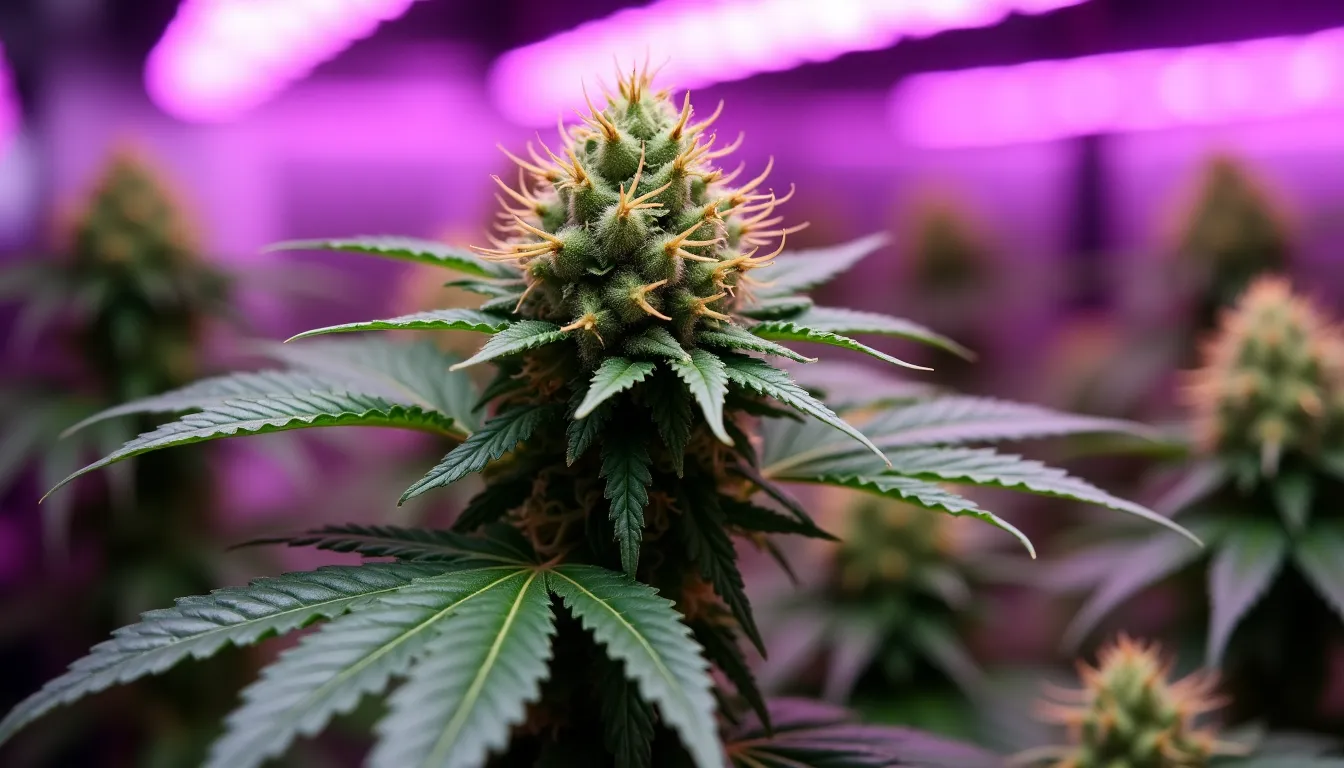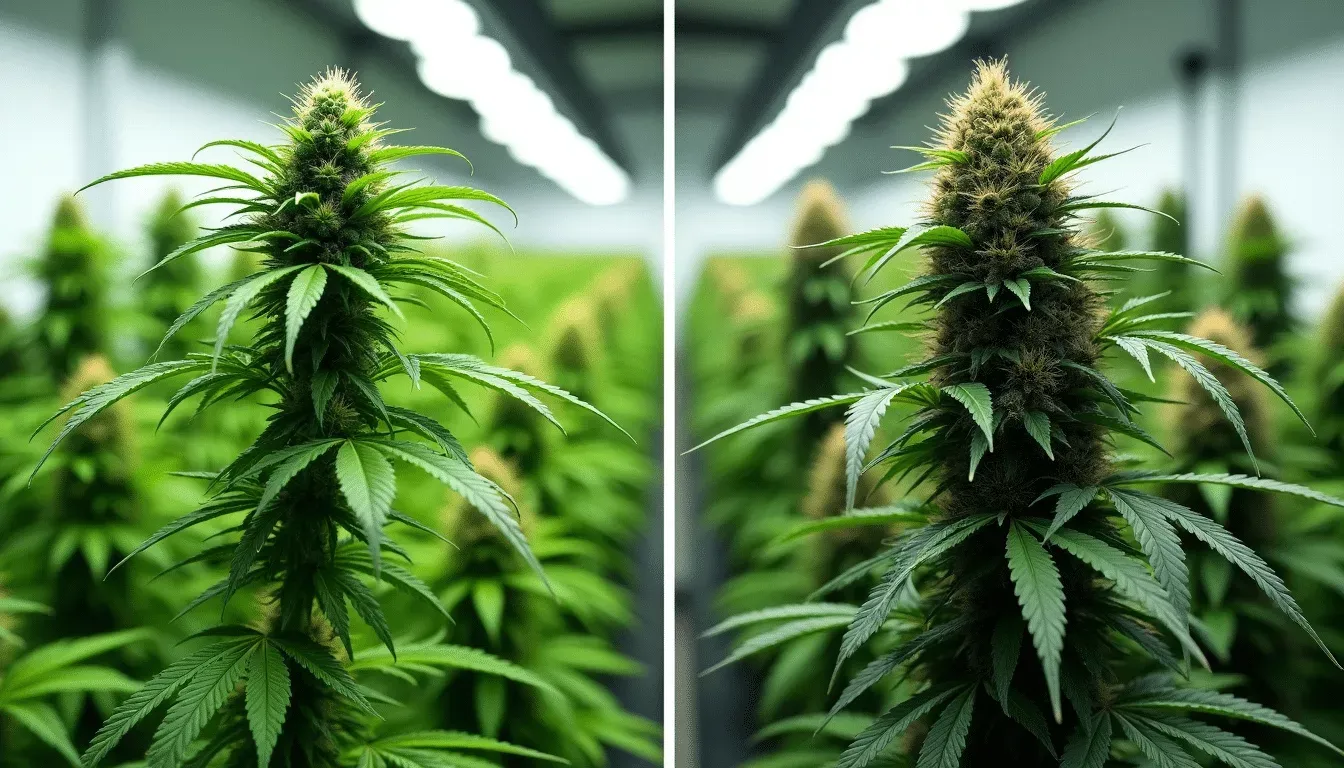What are alternative cannabinoids you should consider ?
As the world of cannabis science expands, so does our understanding of cannabinoids, the unique compounds found in the cannabis plant. While many people are familiar with the well-known THC (tetrahydrocannabinol) and CBD (cannabidiol), a diverse and fascinating group of cannabinoids is emerging on the scene. These are the alternative cannabinoids, and they could revolutionize the way we think about cannabis and its benefits. Whether you’re a seasoned enthusiast, a casual consumer, or simply curious, understanding these compounds can open new doors in holistic health and wellness. In this article, we’ll delve into what alternative cannabinoids are, uncover their benefits and uses, and offer insights into incorporating them into your lifestyle.
Understanding Alternative Cannabinoids
Recent years have witnessed a burgeoning interest in the lesser-known cannabinoids that lie beyond THC and CBD. Yet, what exactly defines an ‘alternative cannabinoid’? Let’s explore.
What Are Alternative Cannabinoids?
Alternative cannabinoids are naturally occurring chemical compounds found in the cannabis plant. While the term ‘alternative’ suggests something different or non-mainstream, these cannabinoids are simply those that have not received the same level of attention as THC and CBD. Examples include CBG (cannabigerol), CBN (cannabinol), and CBC (cannabichromene), each with its unique properties and potential benefits.
One reason these cannabinoids are gaining attention lies in their interaction with the endocannabinoid system (ECS) in the human body. The ECS plays a crucial role in regulating a multitude of physiological processes, and cannabinoids have been found to influence this system in distinct ways. By exploring these alternative cannabinoids, researchers and consumers are beginning to appreciate a broader spectrum of applications that the cannabis plant can offer.
Why Are They Important?
The importance of alternative cannabinoids extends far beyond novelty. They represent a frontier in personalized medicine and wellness solutions. For instance, alternative cannabinoids may offer therapeutic effects without the psychoactive high associated with THC, making them appealing to individuals seeking medical benefits without impairment. Furthermore, the ‘entourage effect’ — the theory that cannabinoids work better together than in isolation — suggests that incorporating a range of cannabinoids could amplify the overall impact, enhancing therapeutic outcomes.
Benefits and Practical Uses
As awareness of alternative cannabinoids grows, so too does the understanding of their benefits and practical applications. Let’s uncover how these compounds might be integrated into everyday life.
Unveiling the Benefits
Different alternative cannabinoids come with varying benefits:
CBG (Cannabigerol): Often referred to as the ‘mother of all cannabinoids,’ CBG serves as a precursor to other cannabinoids. Preliminary studies suggest it might aid in reducing inflammation and potentially slow bacterial growth. Moreover, some research indicates that CBG may have neuroprotective properties, offering a promising avenue for addressing conditions like glaucoma and neurodegenerative diseases.
CBN (Cannabinol): CBN is praised for its potential sedative effects, making it an area of interest for those struggling with sleep disorders. It could also play a role in pain relief, making it a valuable addition to therapeutic regimens where relaxation and pain management are priority.
CBC (Cannabichromene): Although not as widely studied, CBC has shown promise in combating depression and promoting brain health. It’s also believed to have anti-inflammatory properties and may contribute to gut health.
Real-World Uses and Solutions
In terms of practical applications, alternative cannabinoids are becoming increasingly popular in health and wellness products. These compounds are often infused into oils, tinctures, edibles, and topical treatments. For instance, CBG is being incorporated into skincare products, capitalizing on its antioxidant properties to promote skin health. CBN finds its way into sleep-aid formulations, catering to consumers seeking a natural remedy for insomnia.
In agriculture and cultivation, interest in these minor cannabinoids is prompting a shift in breeding practices. Growers are selectively cultivating strains with specific cannabinoid profiles to meet consumer demand for bespoke experiences.
Incorporating Alternative Cannabinoids Into Your Routine
To maximize the potential advantages of alternative cannabinoids, consider the following insights and recommendations.
Making Informed Choices
With the market for cannabinoid products flourishing, making informed choices is crucial. Here are some tips to help you navigate:
-
- Research: Begin with reputable sources and scientific studies to understand the specific benefits and limits of the cannabinoid you’re interested in. The National Center for Biotechnology Information (https://www.ncbi.nlm.nih.gov) is an excellent resource.
- Transparency: Choose products from brands that prioritize transparency and third-party lab testing. Knowing the precise cannabinoid content and absence of contaminants is key to ensuring safety and efficacy.
-
- Consult Professionals: If you’re considering alternative cannabinoids for medical purposes, consult a healthcare professional or a specialist in cannabinoid medicine. They can provide personalized advice tailored to your health needs and circumstances.
Trying It Out
If you’re ready to experiment with alternative cannabinoids, start slow. Every body interacts with cannabinoids differently, so taking the time to find the right dose for your personal tolerance levels is critical.
-
- Microdosing: Begin with small quantities to observe how your body responds. This approach minimizes the risk of adverse effects and allows you to gradually find the optimal dosage.
-
- Journaling: Keep a record of your experiences, noting the products tried, doses taken, and any effects noticed. This personal log can be invaluable in refining your intake and documenting your journey.
-
- Patience is Key: Recognize that it may take time to notice the benefits. Be patient and consistent, adapting your routine as needed based on your observations.
Conclusion
The realm of alternative cannabinoids holds remarkable potential, offering fresh avenues for wellness and therapeutic support. From enhancing sleep quality to promoting neuroprotection and more, these compounds provide exciting opportunities to enrich our understanding of the intricate cannabis plant. As you explore the vast possibilities of alternative cannabinoids, approach the experience with curiosity and mindfulness, embracing the diverse benefits that extend well beyond the familiar confines of THC and CBD.
Ready to dive deeper into the world of cannabinoids? Check out additional resources and engage with the community to share insights and ask questions. Your journey to unlocking the full potential of cannabis starts here—share your experience or connect with others to explore endless possibilities!
FAQ: Alternative Cannabinoids
What are alternative cannabinoids?
Alternative cannabinoids are compounds found in cannabis that are different from the well-known cannabinoids like THC and CBD. Examples include CBG, CBN, and Delta-8-THC, each offering unique effects and benefits.
Why should I consider alternative cannabinoids?
You should consider alternative cannabinoids for their diverse therapeutic properties, including pain relief, anti-inflammatory effects, and improved sleep quality. They offer options for those seeking specific benefits or who may be sensitive to THC or CBD.
How do alternative cannabinoids differ from THC and CBD?
Alternative cannabinoids differ in their chemical structure and psychoactive effects. For instance, Delta-8-THC is less psychoactive than Delta-9-THC (the common THC), and CBN is known for sedation rather than a high, offering different therapeutic profiles.
Are alternative cannabinoids legal?
The legality of alternative cannabinoids varies by region and substance. Some, like Delta-8-THC, fall into legal gray areas and can vary by state or country. Always check local laws before purchasing or using these cannabinoids.
What forms do alternative cannabinoids come in?
Alternative cannabinoids can be found in various forms, including oils, edibles, tinctures, vapes, and capsules, allowing users to choose a method of consumption that suits their preferences and needs.
Related: Gummies for Sleep, CBD Gummies for Sleep
Share this content:



